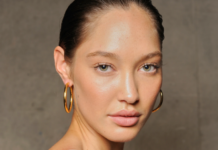Anyone who has started going gray knows it doesn’t happen overnight. You don’t suddenly wake up with silver strands as if someone painted them while you slept; it starts with a pigment-deprived hair or two while some of your hair still grows in full color. And when more of your hair starts growing gray, you may start to notice a demarcation line in larger sections of your hair where the color stopped and the gray started.
Going gray is a process, but realizing it’s happening can feel very sudden. You may know immediately that you want to cover it with dye, or you may consider embracing the gray. In the case of our Birnur Aral, Ph.D., Director of the Good Housekeeping Institute’s Health, Beauty and Environmental Sciences Lab, she did a little bit of both.
“I had an unrelated allergic reaction that made my lips swell up for a few weeks, so I skipped my monthly hair color visit in order to give my body a break,” explains Aral, who had been coloring her hair since her late 20s to cover up grays. “My roots grew about an inch, and I started noticing the salt-and-pepper pattern of my natural hair and toying with the idea of going gray.”
Ultimately, Aral decided to go fully gray, and her experience both personally and professionally — this scientist has tested a whole lot of hair dye in her 11 years at the GH Institute! — can serve as a guide for you if you’re ready to make the switch.
Here’s what you need to know:








































